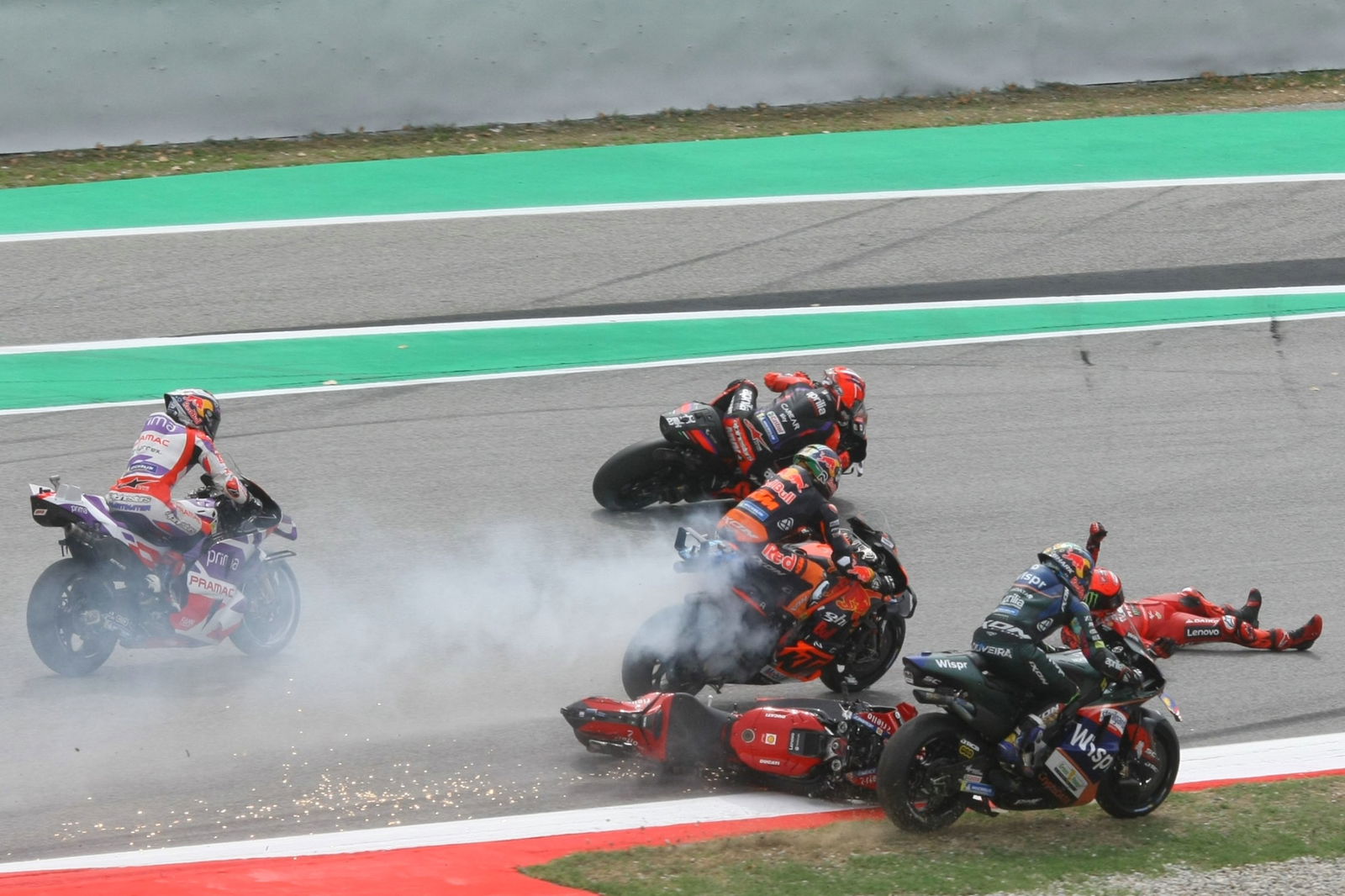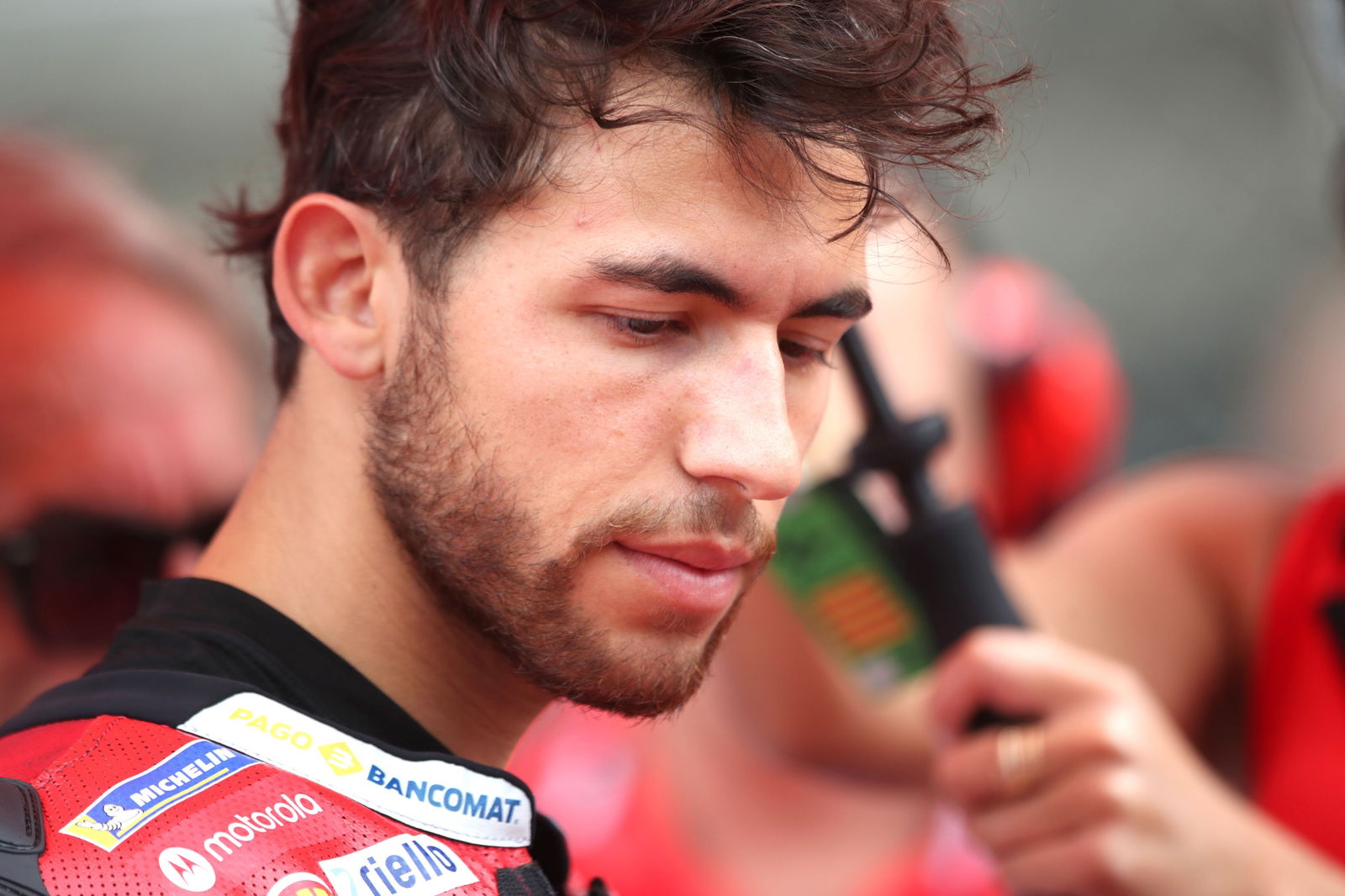Should the Barcelona MotoGP start be moved after Catalunya carnage?

Last season it was triggered by Takaaki Nakagami, who brought down Alex Rins (fracturing his wrist) and eventual world champion Francesco Bagnaia.
This year, after some close moments at the start of the Saturday Sprint, five riders were eliminated when Enea Bastianini - starting 14th after a penalty - ran out of room on the inside kerb, taking down Johann Zarco, Alex Marquez, Fabio di Giannantonio and Marco Bezzecchi.
Bastianini, later given a long lap penalty to serve at a future race, came off the worst, with fractures to his hand and ankle.
An unrelated accident, just moments later, then saw Bastianini’s team-mate Francesco Bagnaia highside from the lead and land in the track, with his legs then hit by Brad Binder.
While the Bagnaia incident is thankfully rare, and he escaped without any fractures, Catalunya was the second MotoGP event in a row with a first-turn pile-up, after seven riders were tangled up in Austria.
Quizzed on whether anything can be done to reduce such opening braking zone accidents in future, riders were divided on the significance of various factors.
In the specific case of Catalunya, Jack Miller was the first to suggest that moving the start line closer to Turn 1 could make it safer.
“If you look through the history books at Barcelona, there’s always a big one at Turn 1. Always has been, always will be,” said the KTM rider, who narrowly avoided being brought down in the aftermath of Bagnaia’s fall.
“There’s such a big drag from the start grid to the first corner, you can make up a lot of positions or lose a lot of positions in that first chicane. It’s unfortunate but that’s racing.”
“Yeah, for sure,” he added, when asked if moving he start would make things safer. “No doubt, we’re doing upwards of 250 km/h into Turn 1. When you put 22 bikes together that’s a lot of bikes going down to a second-gear corner.”
Monster Yamaha’s Franco Morbidelli was also adamant that it would make a difference.
“I think they need to make the start closer to the first corner, first of all,” he said.
“It's going to make a difference, f**k, you arrive in fifth year, 200+ ks. There is big mess and the braking is more difficult. For sure, it's going to make a difference. Straight away, I mean that's a big thing that could improve a lot and then it's racing.
“It can happen anyway, even if maybe the start is closer, but I think the chance is much smaller.”
Morbidelli added that, “from the video I saw, Enea was very ‘overly ambitious’!”
Team-mate Fabio Quartararo explained that it is also difficult to correctly pick a braking marker for the start, since the brake point is in a different place to a normal flying lap.
“We arrive pretty fast, and every [racing] lap when we arrive, we know the braking reference. But actually, we never really [know for the] start and I think we still arrive at close to 300 km/h. So to find a good braking reference is complicated.
“Yesterday, I was lucky to not hit anyone, because I braked too late, and there was a little bit of dust and I went wide. And I think it's what happened to Enea, but he was on the inside and you see he brakes and the rear was going up. So he was also on the limit. But I think it's not a bad idea [to move the start closer].”
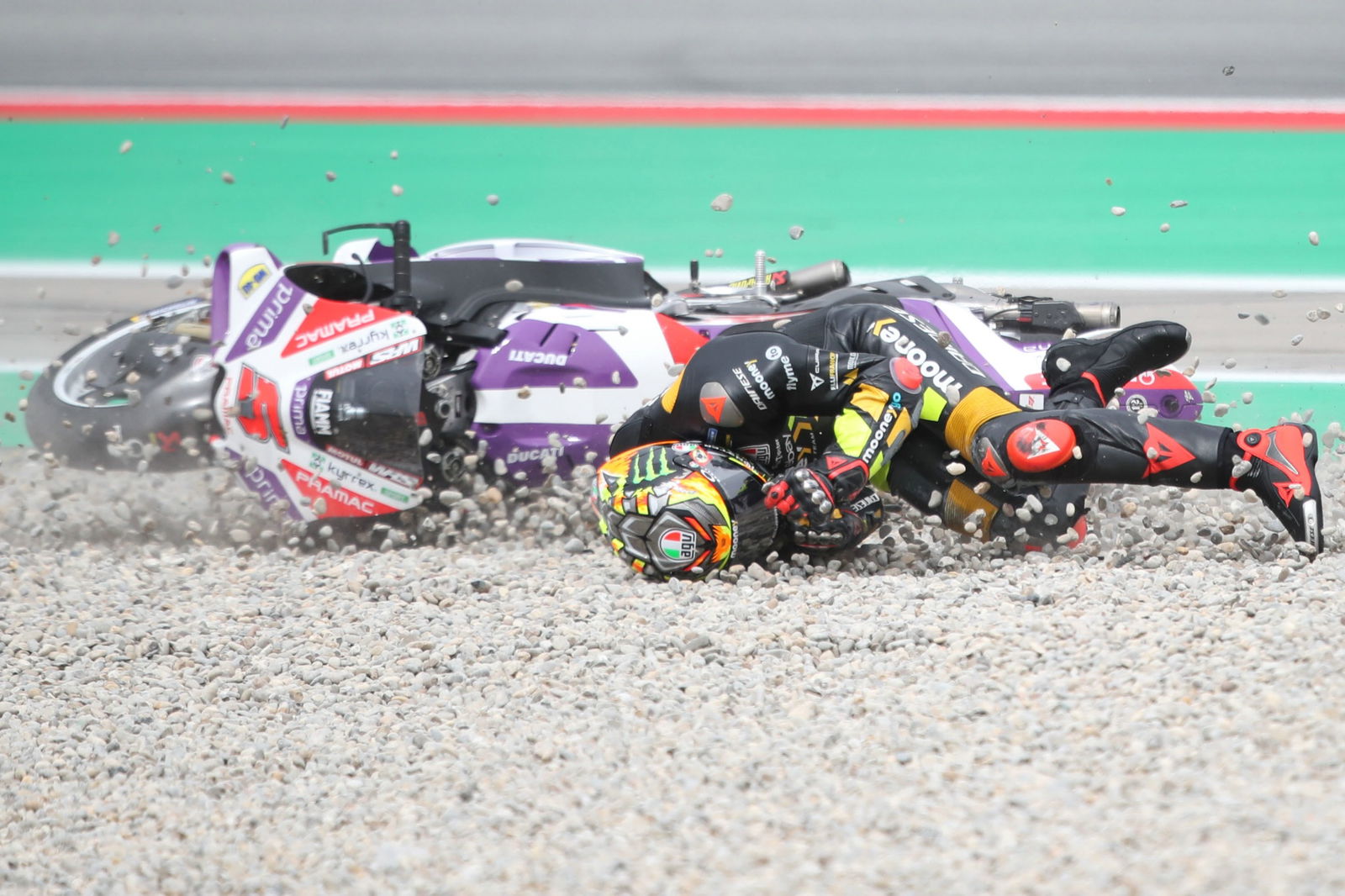
However, VR46 Ducati’s Luca Marini pointed out that Austria has a short run to turn one and felt the sharp shape of the first turn was more significant.
“No. It [would just mean] less speed, but then the corner [shape] is the same. It also [happened in] Austria where the speed is slow, so you need to slow down a lot.
“And here the corner is the same. You need to keep the brake on and slow down a lot to prepare the turn. So this is the problem, but it’s something that every rider knows.
“On the other side, every rider know that the first corner is the key point of the race, because my second start was very bad and my race was f*****d up since lap one.”
“But yeah, braking for turn 1 here is very difficult. Also today, there was a lot of wind in the back.”
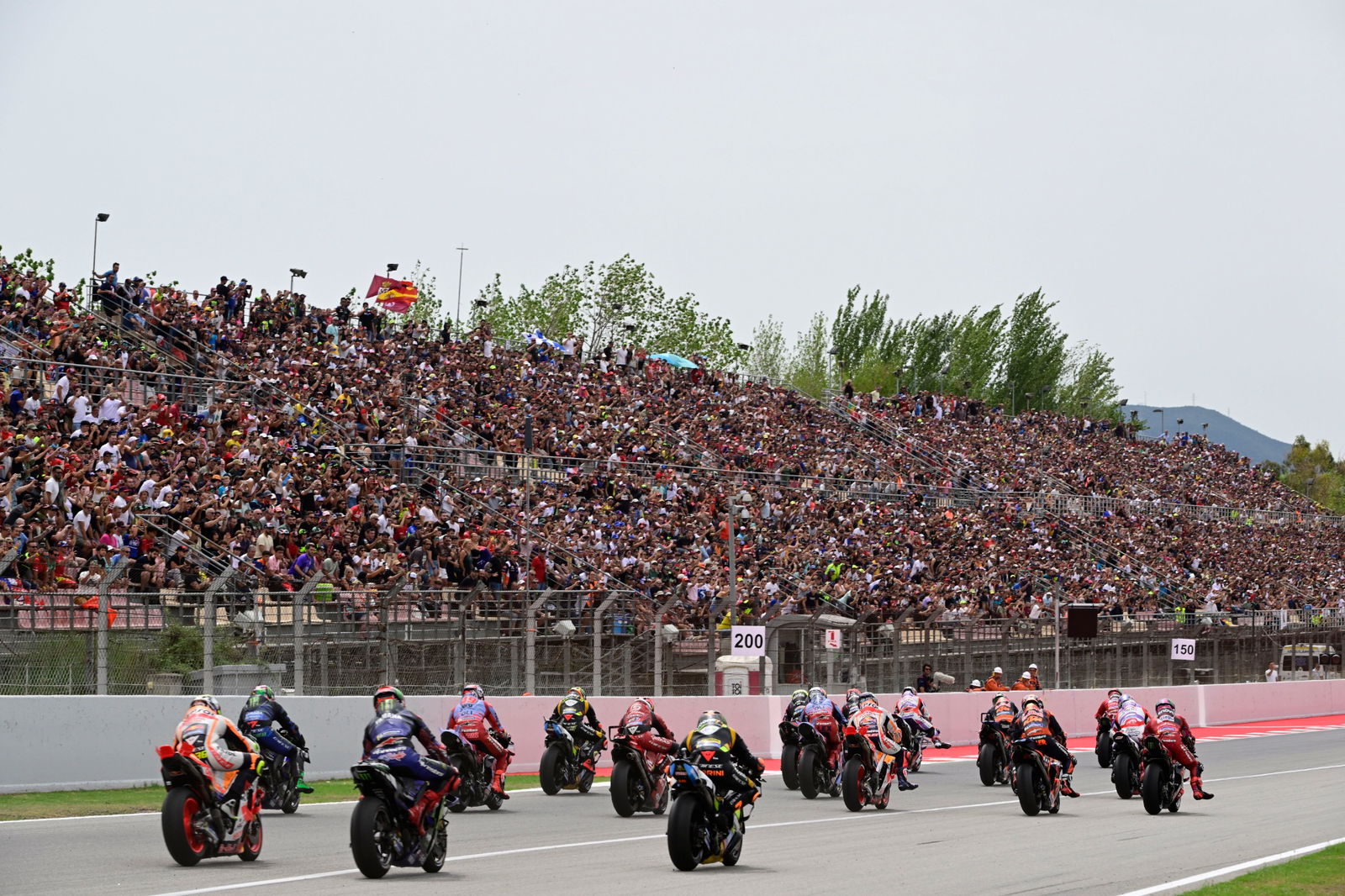
Having been taken out by early accidents on several occasions this season, Miguel Oliveira quipped that it was “strange - something happened and I'm not involved!”
The RNF Aprilia rider didn’t think there was an obvious solution, but did feel that the need to brake hard in order to disengaged the holeshot devices could be a factor.
“I saw the replay,” he said. “I think the only thing which could avoid it is to avoid using the ride-height devices, because we do have to brake super late and strong to disengage the device, and eventually this creates an even bigger pitch to the front.
“We also need to start with low pressure, the tyre is not ready, so if you try to overtake too many people on the brakes in the first couple of corners you are going to eventually end up having an incident like this.”
Pramac Ducati’s Johann Zarco felt it was a combination of many factors.
“Because there is always one who [pushes] a bit too much [at turn 1],” he said. “Last year was Nakagami, and this year was Bastianini. It can happen, the first corner is a bit tight, but not so tight as in Spielberg. And we arrive here with more speed, because normally in fifth gear we are already around 300 km/h.
“So you don't have a clear brake reference, because you never arrive at 300, you always arrive at 350 km/h [on a normal lap]. And today there was a big wind pushing. So all this information, the riders must know it and take it into consideration.
“But some of them sometimes say, ‘OK, I’ll try. If I do it, it will be great’. It's the moment you can gain the most positions, but we need to accept sometimes that it's not a great weekend.
“If you gain three or six positions, it changes your race, but it can change also in this [opposite] way, then it becomes like a disaster.”
“The [holeshot] devices? No,” he continued. “It helps to do a better start, but without the devices, you will do a start in maybe 2.9 seconds. Now you can do it in 2.3. So it's not six tenths that change all this behaviour in the first corner.
“Yeah, moving forward the start could help for the incidents, but it's more the riders that sometimes need to control a bit.
“In Spielberg, we got the same thing. Jorge did this amazing thing starting from 12th, he exited the first turn in 6th position, so he gained 6 positions. And this happens one time or two times a year. But then [today] we got four or five guys on the floor.
“I'm like the old man, speaking that we should all control ourselves. I'm controlling myself, but most of the time people say you are missing your start or you are losing positions. But I accept it, and I try to come back.”
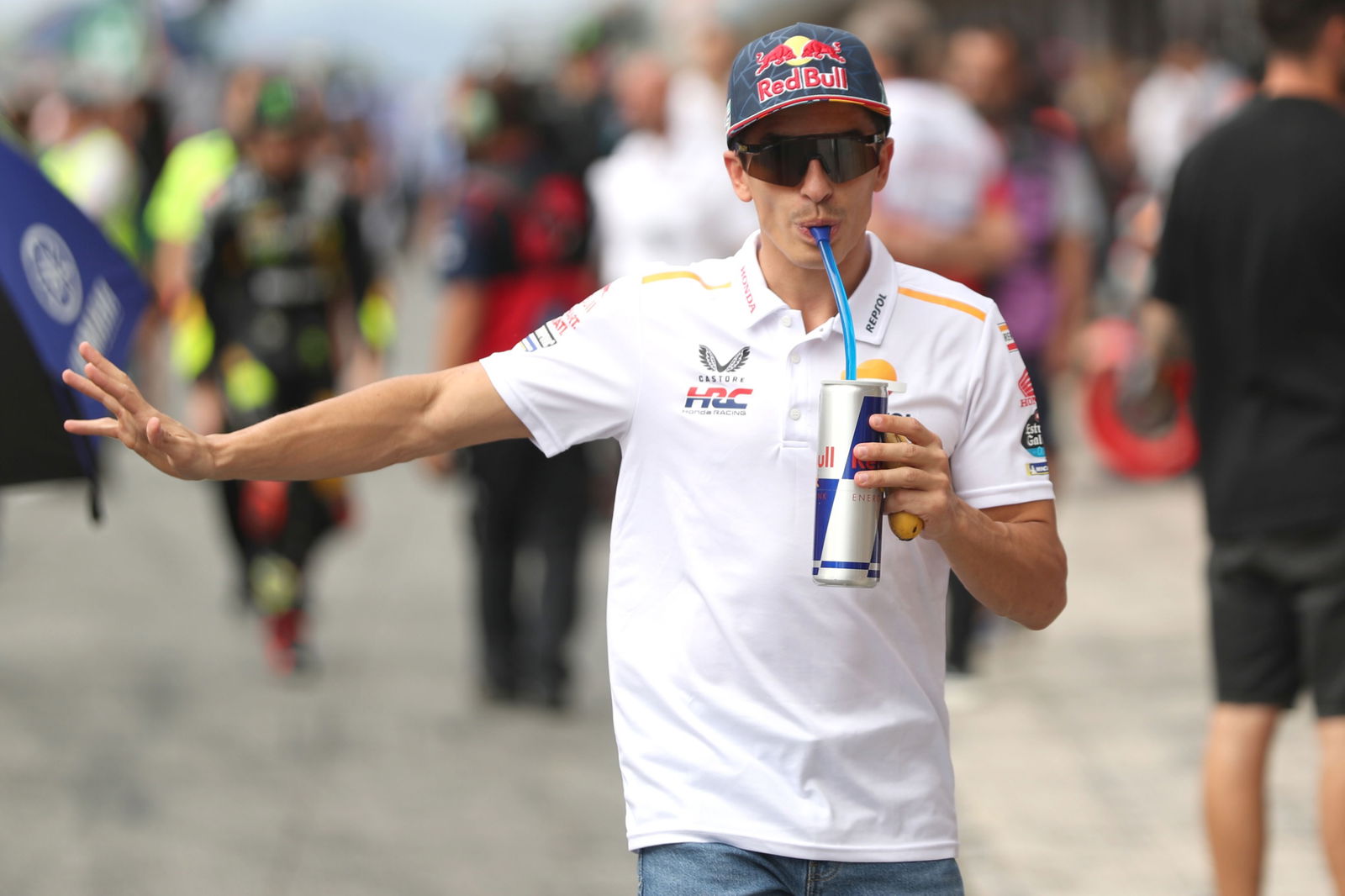
Eight-time world champion Marc Marquez also believes it is in the hands of the riders:
"Just the riders need to be more careful, I mean if you see the second start, everybody was more careful, because everybody saw what happened and then everybody was more careful," said the Repsol Honda rider.
"It doesn't matter [about the location of the start is] because it's close in Austria and also we had a big crash there.
"So in the end is the riders who need to decide and understand when to brake. Today Enea was not crazy, but sometimes it happens. These are super fast bikes.
"The rider that did the mistake has been penalised. Everybody's escaped in a good way, just looks like Enea maybe has some [injury]. The matter is finished."
